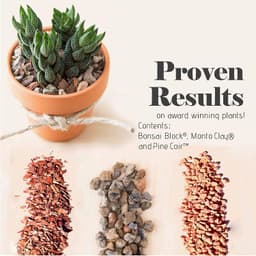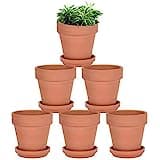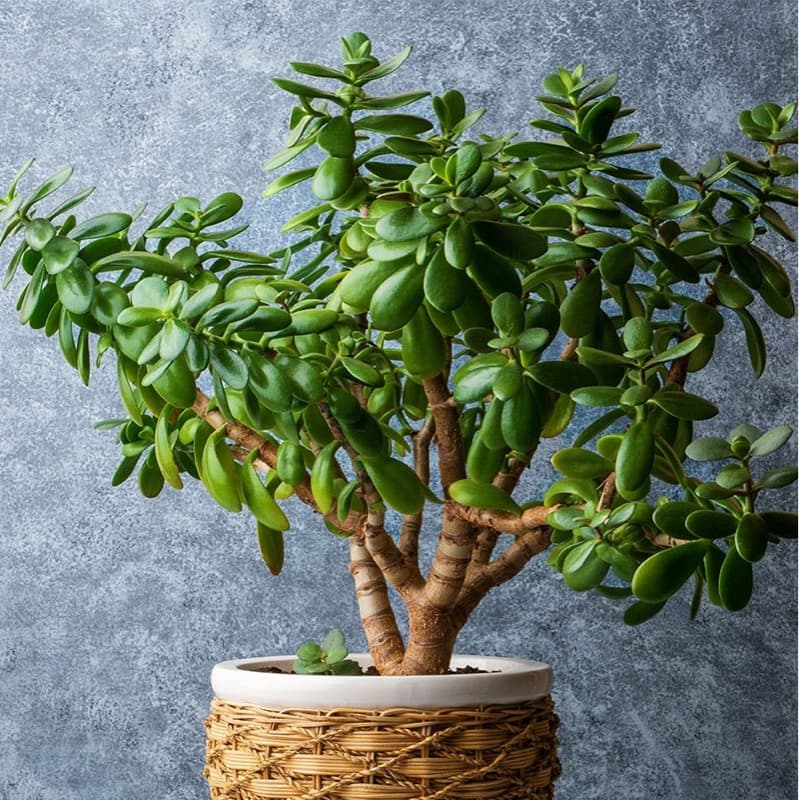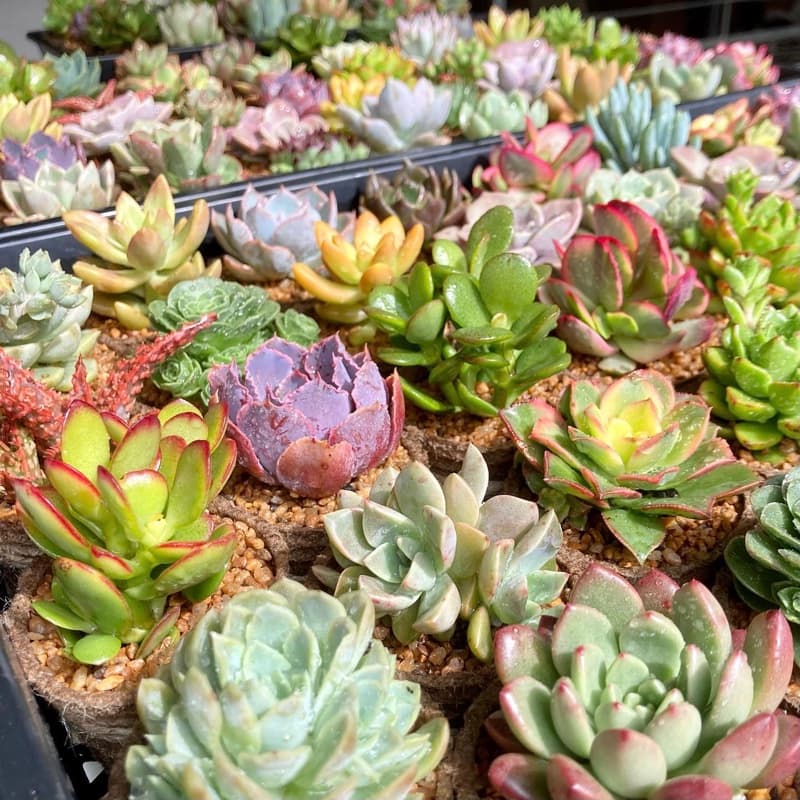What's Wrong With My Succulent? Common Problems of Succulents
Posted by Grace on October 5, 2023
Even though succulents are said to be easy indoor plants, they can sometimes be a bit tricky to keep alive. Trust me, I've been there! Every now and then, they start looking sad and wilted, and it can feel pretty disheartening. But don't worry! There's always a reason for it, and often, there's a simple way to make them happy again.
Contents
Leaning Towards Light
Cause: Lack of Sunlight
If your plant starts leaning towards the light or growing towards a window, that's a sure sign that it isn't receiving enough sunlight.
How to Fix
- Shift your plant toward the source of light.
- Consider that morning light is preferable to harsh afternoon light.
- If planning a significant relocation, do it gradually to avoid shocking the plant.
Shrivelled Leaves
Cause: Underwatering
Leaves dying are a normal part of succulent growth, and there will be times when you need to trim the dead leaves of a succulent, which will often be the bottom, older leaves. However, if the leaves suddenly start shrivelling or looking wrinkled all over, chances are your plant isn't getting enough water.
How to Fix
- Check the soil for dryness to confirm if underwatering is the issue.
- If the soil is very dry, provide your plant with water.
- Make sure to thoroughly drench the soil while watering.
- Consider increasing the frequency of your watering routine.
Rotting
Cause: Overwatering
Commonly, you will notice it on the stem as black, soft or mushy spots. Despite the common moniker of "root rot," it isn't always apparent in the roots. It may also only present as soggy/translucent leaves.
How to Fix
- If you notice soggy leaves, it's advisable to unpot the plant to inspect the roots for dryness and overall health.
- Repot the plant into dry soil if necessary, allowing the roots to dry.
- Consider preemptive beheading as an option, which involves cutting off the healthy top portion above the affected area to propagate.
- Check for a crisp and healthy green interior with a slightly darker ring; it may sometimes appear more brown.
- Let the cutting sit in indirect light to callus, which allows you to monitor for any recurring rot.
- Once the cutting has callused, replant it and follow propagation tips.
If the rot extends too high for a decent cutting, your only chance may be to pull leaves that still appear healthy for propagation.
Yellowing Leaves
Cause: Overwatering
Another sure sign of overwatering, yellowing leaves is something you may notice prior to any major rotting.
How to Fix
- Refrain from watering for a while until the leaves regain their color.
- Allow the soil to dry out between waterings.
Black/Brown Spotting
Cause: Overwatering
If you're seeing your plant turn brown or black in spots or along the trunk of the plant, chances are you've gone a bit overboard in the watering department.
A condition called plant edema, in plants, occurs when rough spots, bumps, or blisters develop on the leaves of succulents and other plants. These spots can be brown, white, red, yellow, or black in color. Succulent edema indicates an imbalance in the plant that you should correct, but it is not a fatal condition. Instead, it serves as an early warning signal prompting you to adjust your growing conditions to prevent more serious damage.
How to Fix
Unfortunately, once the trunk has gone completely black, it can be difficult to bring a succulent back to life. However, leave it for a while to dry out, and you may find that the spots go away, and the plant recovers.
Dull Color
Cause: Lack of Sunlight
Loss of color often occurs when a succulent is exposed to too much sunlight, as there is a bleaching effect. A green succulent may turn to a pale green or white, and if it was bright pink, purple, or yellow, it may turn a lighter green color.
How to Fix
Move your plant to a less bright corner, and if it was in the afternoon sun, move it to a place that gets more reflected light or less harsh morning sun.
Translucent Yellow/Brown
Cause: Overwatering
If a leaf begins to turn translucent yellow/brown and gets soft, that might be a sign of overwatering.
How to Fix
- Refrain from watering for a while until the leaves regain their color.
- Allow the soil to dry out between waterings.
Sudden Leaf Drop
Sudden leaf drop is often a sign of overwatering.
How to Fix
- Early signs of a problem, such as leaf drop, are fortunate because they don't always require immediate action.
- If you are concerned, consider unpotting the plant to check if the rootball is dry, and allow it to dry if necessary.
- Afterward, reevaluate your soil mix and adjust your watering frequency as needed.
Brown or White Mark
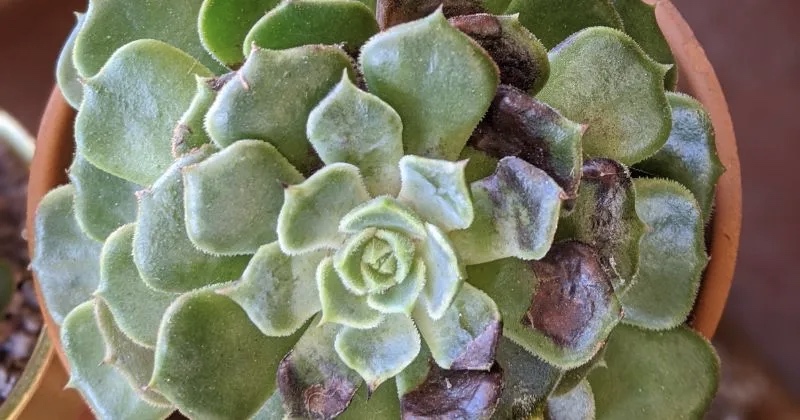 Cause: Sunburn
Cause: Sunburn
Sunburn usually presents as a brown or white mark that looks like a scar.
How to Fix
The severity of the sunburn will determine the course of action. A sunburned plant is often in shock and requires rest.
- Initially, place the plant in a fully shaded area for a few days to monitor its condition.
- If the damage worsens, consider trimming away the affected parts to prevent rot. Do not water immediately.
- Any sun-scalded portions of the plant may also need to be removed.
- Depending on the plant and the extent of damage, you may have cuttings that need to be rooted.
- After this rest period or any necessary cutting, gradually reintroduce the plant to sunlight.
Turning Red
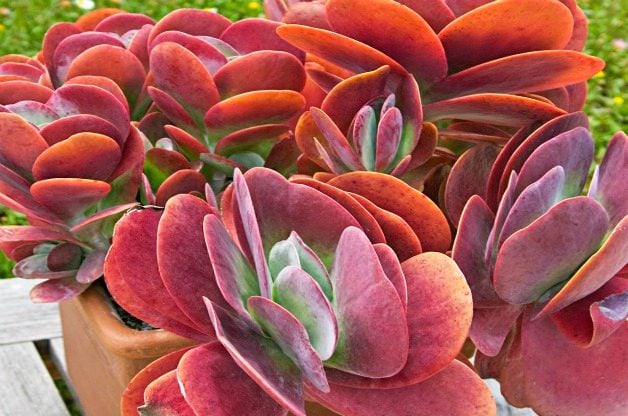 Cause: Sunburn
Cause: Sunburn
Sunburn usually presents as a brown or white mark that looks like a scar.
How to Fix
No need to fix. It is the nature of succulents. Be careful of sunburn.
Final Words
Remember, for succulents, neglect is key. Overtending and overwatering are what kill our succulents the most.

